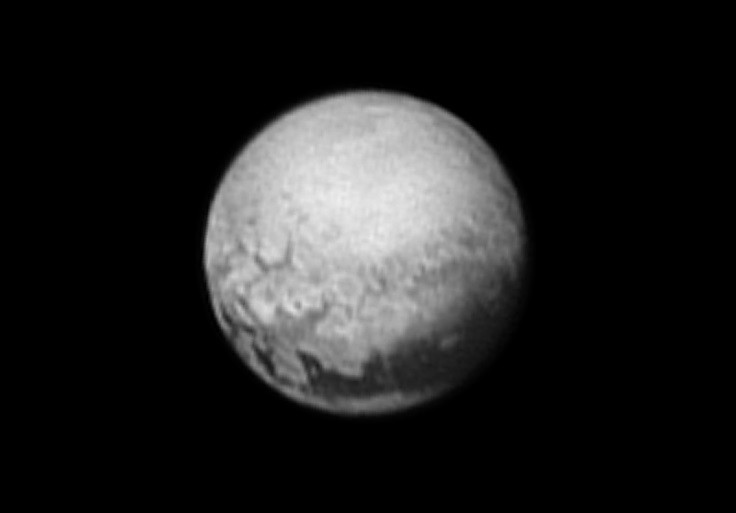Nasa scientists reveal latest photos beamed back from Pluto mission

Nasa's New Horizons spacecraft has sent back new photos of Pluto revealing bright and dark terrain ahead of its highly-anticipated flyby of the planet on Tuesday 14 July.
The spacecraft, the size of a baby grand piano, is set to make history when it becomes the first probe to reach Pluto.
It has taken nine and a half years and will have travelled more than three billion miles when it arrives at the dwarf planet, a third of the size of our moon takings thousands of images in the process.
The latest picture released today (11 July) reveals a vast band of patterned terrain stretching across roughly 1,500 km across its surface.
Polygon-shaped features and sharp transitions between bright and dark regions along the equator known as "the whale" has excited scientists ahead of Tuesday's arrival.
"We're close enough now that we're just starting to see Pluto's geology," said New Horizons program scientist Curt Niebur, at the NASA Headquarters in Washington.
Scientists are interested in a grey area spotted just above the whale's "tail" feature.
"It's a unique transition region with a lot of dynamic processes interacting, which makes it of particular scientific interest," adds Mr Niebur, on Nasa's website.
New Horizons principal investigator, Alan Stern adds: "Among the structures tentatively identified in this new image are what appear to be polygonal features; a complex band of terrain stretching east-northeast across the planet, approximately 1,000 miles long; and a complex region where bright terrains meet the dark terrains of the whale.
"After nine and a half years in flight, Pluto is well worth the wait."
New Horizon will travel as close as 8,000 miles to Pluto's surface and will gather data about the planet's composition during a 30 minute window.
The plutonium-powered craft is the fastest spacecraft ever launched, travelling at around a million miles a day.
Nasa hope to learn more about the atmosphere of Pluto because it is mainly nitrogen, like our own.
A Long Range Reconnaissance Imager (LORRI) and the Ralph instrument on New Horizons has been used to create a Google Earth map of Pluto.
© Copyright IBTimes 2025. All rights reserved.






















